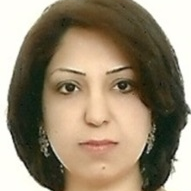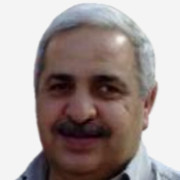International Journal of Information Technology and Computer Science (IJITCS)
IJITCS Vol. 9, No. 1, 8 Jan. 2017
Cover page and Table of Contents: PDF (size: 641KB)
Adaptive Modeling of Urban Dynamics during Armada Event using CDRs
Full Text (PDF, 641KB), PP.1-8
Views: 0 Downloads: 0
Author(s)
Index Terms
Modeling, urban mobility, radius of gyration, travel distance, CDRs
Abstract
This study investigates the mobile phone data during ephemeral event (Armada). The statistical techniques have been used for modeling human mobility collectively and individually. The undertaken substantial parameters are: inter-event times, travel distances (displacements), and radius of gyration. They have been analyzed and simulated using computing platform by integrating various applications for huge database management, visualization, analysis, and simulation. Accordingly, the general population pattern law has been extracted. This study has revealed the individuals mobility in dynamic perspective for 615,712 mobile users, also the simulated observed data are classified according to general, work, and off days.
Cite This Paper
Suhad Faisal Behadili, Cyrille Bertelle, Loay E. George,"Adaptive Modeling of Urban Dynamics during Armada Event using CDRs", International Journal of Information Technology and Computer Science(IJITCS), Vol.9, No.1, pp.1-8, 2017. DOI:10.5815/ijitcs.2017.01.01
Reference
[1]Mohamed Salem, Joachim Schonowski, Axel Küpper, Citizen-centric Smart Cities: M-Technology for realizing Smart Participatory Urban Sensing in E-Government, International Journal of Information Technology and Computer Science ( IJITCS ), Volume No : 12 Issue No : 1, December, 2013.
[2]Dapeng Li, Thomas J. Cova, Philip E. Dennison, A household-level approach to staging wildfire evacuation warnings using trigger modeling, Computers, Environment and Urban Systems, 2015.
[3]Yikang Rui, Urban Growth Modeling Based on Land-use Changes and Road Network Expansion, Doctoral Thesis in Geodesy and Geoinformatics with Specialization in Geoinformatics Royal Institute of Technology Stockholm, Sweden, 2013.
[4]Henderson L., The statistics of crowd fluids, Nature, 229, pp. 381–383, 1971.
[5]Pan X., Computational modelling of human and social behaviours for emergencyegress analyses, Stanford University: U.K., 2006.
[6]Héctor A. López-Ospina, Francisco J. Martínez b, Cristián E. Cortés, Microeconomic model of residential location incorporating life cycle and social expectations, Computers, Environment and Urban Systems, 2015.
[7]Thomas Couronné, Zbigniew Smoreda, Ana-Maria Olteanu, Individual Mobility and Communication Patterns, Analysis of Mobile Phone Datasets and Networks, NETMOB conference, MIT, Cambridge, MA, Oct. 10-11, 2011.
[8]Markus Schlapfer, Luis M. A. Bettencourt, Sebastian Grauwin, Mathias Raschke, Rob Claxton, Zbigniew Smoreda, Geoffrey B. West, Carlo Ratti, The Scaling of Human Interactions with City Size, Physics, July, 2014.
[9]John Steenbruggen, Emmanouil Tranos, Peter Nijkamp, Data from Mobile Phone Operators: A tool for Smarter Cities?, Elsevier Volume 39, Issues 3–4, May 2015, Pages 335–346, 2014.
[10]Francesco Calabrese, Mi Diao, Giusy Di Lorenzo, Joseph Ferreira, Jr. Carlo Ratti, Understanding Individual Mobility Patterns from Urban Sensing Data: A Mobile Phone Trace Example, Elsevier, September, 2012.
[11]Vatcharaporn Esichaikul and Phyo Thinzar Latt, Multidimensional Data Analysis of Call Records in a Telecommunication Company, International Journal of Information Technology and Computer Science ( IJITCS ), Volume 22 : Issue No : 1, December, 2015.
[12]Behadili Suhad Faisal, Cyrille Bertelle, Loay Edwar George, Visualization of People Attraction from Mobile Phone Trace Database: A Case study on Armada 2008 in French City of Rouen, Proceedings of the 1st International Engineering Conference On Developments in Civil & Computer Engineering Applications, 2014.
[13]Lin Sun, Enabling Pervasive Applications by Understanding Individual and Community Behaviors,
Université Pierre & Marie Curie -TELECOM SudParis, December, 2012.
[14]Roberto Trasarti, Ana-Maria Olteanu-Raimond, Mirco Nanni, Thomas Couronne, Barbara Furletti, Fosca Giannotti, Zbigniew Smoreda, Cezary Ziemlicki, Discovering urban and Country Dynamics from Mobile Phone Data with Spatial Correlation Patterns, Telecommunications Policy archive, Volume 39 Issue 3, May 2015, Pages 347-362, 2015.
[15]Marta C. González, Cesar A. Hidalgo, Albert-Laszlo Barabasi, Understanding individual Human Mobility Patterns, nature 453, 2009.
[16] Suhad Faisal Behadili, Cyrille Bertelle, Loay E. George, Modelling Dynamic Patterns using Mobile Data, pp. 25–30, Cs & It-Cscp 2016 .
[17]Ilya Narsky, Frank C. Porter, Statistical Analysis Techniques in Particle Physics, Fits, Density Estimation and Supervised Learning, Wiley-VCH; 1 edition December 23, 2013.
[18]Suhad Faisal Behadili, Cyrille Bertelle, Loay E. George, Human Trajectories Characteristics, ICUPTCE'16, 2016.
[19]Christian M. Schneider, Vitaly Belik, Thomas Couronné, Zbigniew Smoreda, Marta C. Gonzalez, Unravelling Daily Human Mobility Motifs, Royal Society, 2013.
[20]Xiao-Yong Yan, Xiao-Pu Han, Tao Zhou, Bing-Hong Wang, Exact Solution of Gyration Radius of Individual's Trajectory for a Simplified Human Mobility Model, Physics, 2010.


